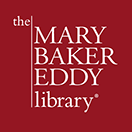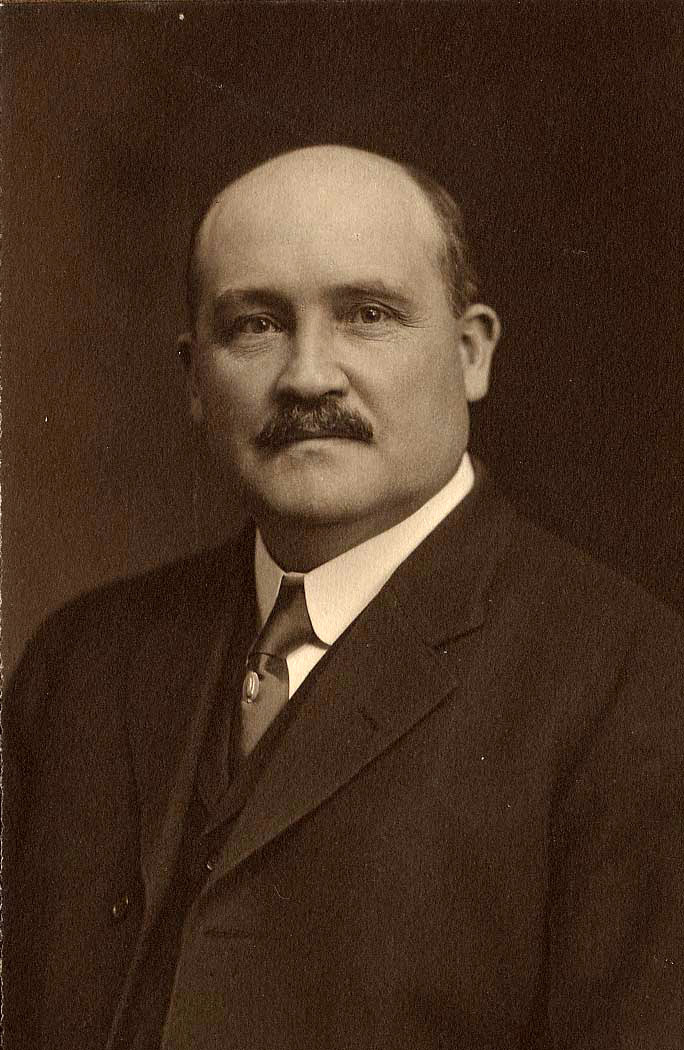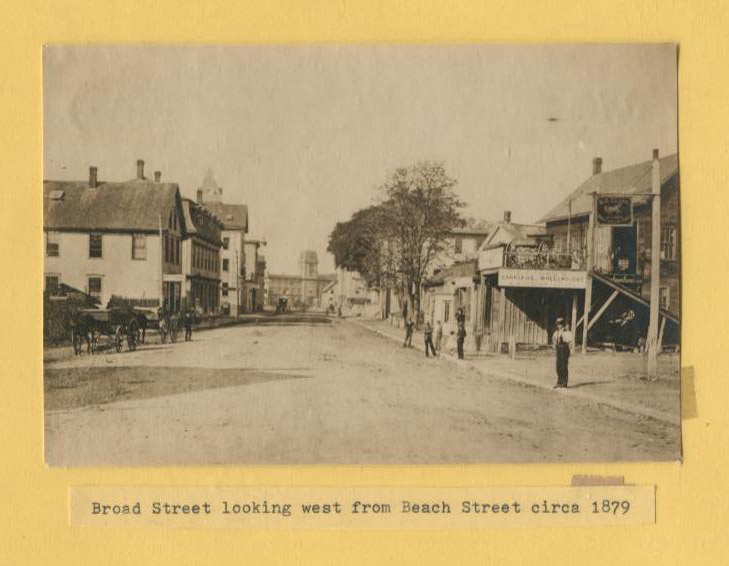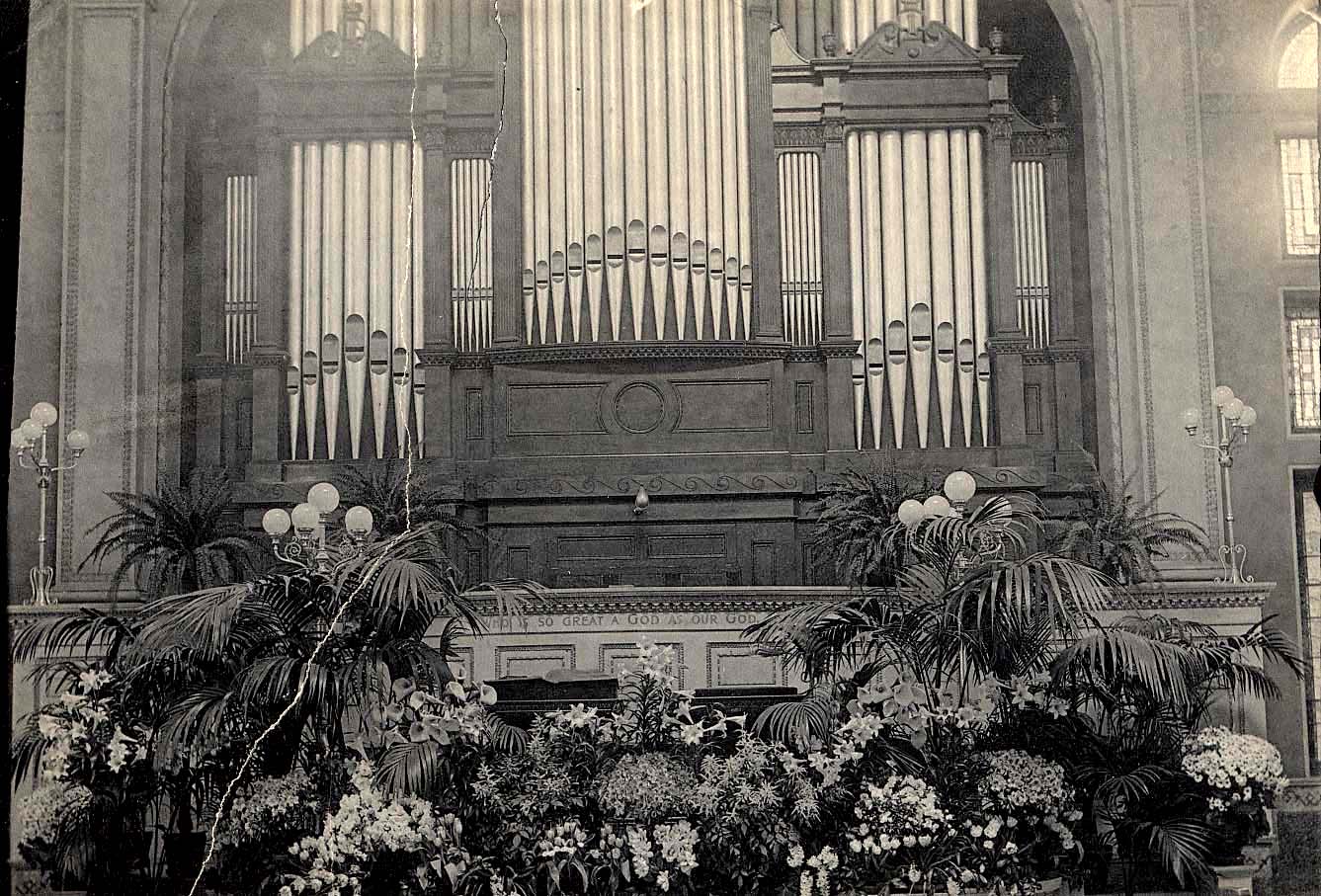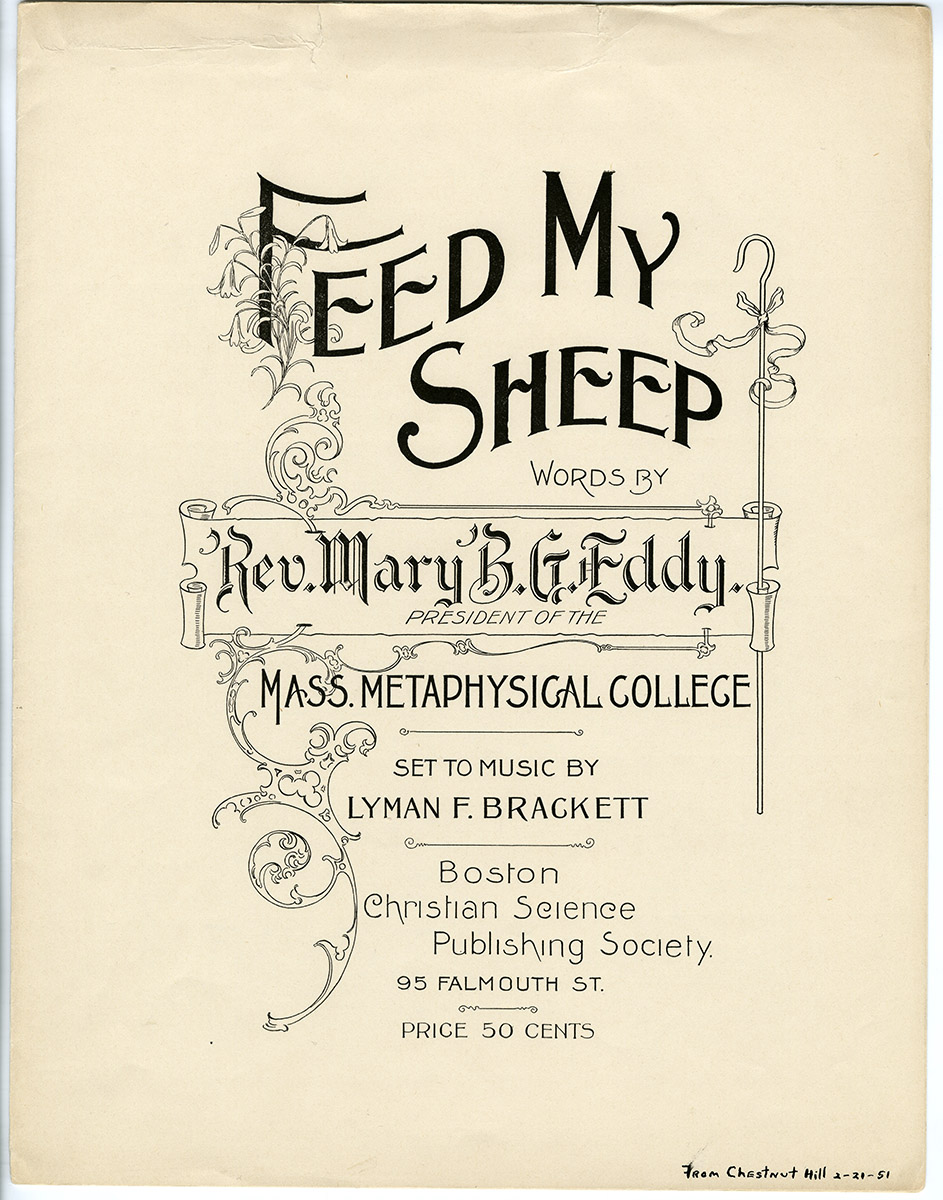The Christian Science Hymnal: History, Heritage, Healing
The Christian Science Hymnal: History, Heritage, Healing
The Christian Science Hymnal: History, Heritage, Healing
Listen to this article
Chapter 12
Mary Baker Eddy’s hymns, part 1
Early in life, Mary Baker Eddy began to express her deepest thoughts in poetic form. “From childhood I was a verse-maker,” she wrote in an autobiographical sketch. “Poetry suited my emotions better than prose.” She then shared one of her “girlhood productions”—a poem that reflects a deep desire “to bless mankind,” which became the hallmark of her life:
If fancy plumes aerial flight,
Go fix thy restless mind
On learning’s lore and wisdom’s might,
And live to bless mankind.
The sword is sheathed, ’tis freedom’s hour,
No despot bears misrule,
Where knowledge plants the foot of power
In our God-blessed free school….1
As 1910 dawned, Eddy asked her secretary Adam Dickey to gather her poems for publication. A volume titled Poems, containing 48 of the 104 that she had written over the course of her lifetime, was printed that September. Dickey began its preface with this observation:
The poems garnered up in this little volume were written at different periods in the life of the author, dating from her early girlhood up to recent years. They were not written with a view of making a book, each poem being the spontaneous outpouring of a deeply poetic nature and called forth by some experience that claimed her attention.2
John Randall Dunn, himself a poet,3 was Editor of the Christian Science periodicals from 1943 to 1948. In a 1947 article titled “Appreciation of Mrs. Eddy’s poetry,” he noted:
It is a mistake to read Mrs. Eddy’s verse as one would some classic poem, seeking therein only intellectual enjoyment. Throughout her whole human experience this extraordinary mentality was plumbing the depths of spiritual consciousness and striving through the media of poesy and prose to convey to others at least a modicum of the truths she discovered.4
Click image to enlarge
Adam H. Dickey, c. 1910. P00546.
The seven poems that became hymns represent the epitome of Eddy’s poetic output, their concepts so eloquently expressed. They speak directly to the heart, while at the same time equal her most thoughtful prose in precisely stating spiritual ideas. The February 1914 Christian Science Journal reprinted an article from The Christian Science Monitor, observing how the poems “were written in the midst of an enormous activity, during the years when she was declaring, teaching, and establishing Christian Science and its world-wide organization.” It went on to say that these poems “express herself,—aspiration, abnegation, struggle, victory, unselfish love; the sorrowing and triumphing Leader, the friend of humanity, the mother of her flock.”5
The inspiration to write poetry, and the comfort Eddy received from it, sustained her during dark periods in life, including the death of her husband George Washington Glover in June 1844, only months into their marriage.6
Constant ill health, separation in 1851 from their young son, George, and increasingly strained relationships with other family members, caused a deep feeling of aloneness. Soon after Eddy’s watershed 1866 healing, her husband Daniel Patterson deserted her. In August 1867 we witness the increasing spirituality of her thought in a poem titled “Alone.” The beginning of stanza three shows the tenor and strength of her poetic expression, which would be expanded into “Christ My Refuge,” the first of her poems that were eventually set to music and included in the 1892 Christian Science Hymnal:
And o’er the harp strings of the soul
Sweet sounds this trembling echo roll….7
“Christ My Refuge” (1868)
Eddy published the original version of this poem, with eight verses, in the Lynn Reporter on February 15, 1868. It was also published that August in the Amesbury Villager, with slight revisions.
“Christ My Refuge” clearly indicates Eddy’s yearning to let the Christ-spirit lift her thought above the waves of doubt and fear. She fixes her sight “on God, the rock upon my shore,” and asks to be borne “upward to a world of light.” In The History of The Christian Science Movement, William Lyman Johnson states that “Christ My Refuge” was “born of hard and bitter experience, but it leads the reader up out of sickness and sin by distinct steps, to the perfect vision.”8
Click image to enlarge
Broad Street looking west from Beach Street, Lynn, Massachusetts, c. 1879. Courtesy of Lynn Museum and Arts Center.
In her work No and Yes, Eddy stated that “Christian Science involves a new language …. It is the ‘new tongue’ of Truth, having its best interpretation in the power of Christianity to heal.”9 In the original version of “Christ My Refuge,” we see her confronting the challenge of finding the language to express spiritual truths. As she would eventually elevate and clarify the language in Science and Health with Key to the Scriptures, so she continued to improve the language in “Christ My Refuge,” revising this poem again and again over the next two decades. In his 1930 biography of Eddy, Episcopal minister Lyman Powell noted, “Perhaps nowhere has Mrs. Eddy indicated more vividly her love and loyalty to Christ Jesus than in her poem [‘Christ My Refuge’].”10
Comparing the original poem to its final version, with its reordered verses, one sees how Eddy’s budding ideas in the first six stanzas of the original were eventually refined and clarified in the final expression. She eventually removed two of the original eight verses, and the concluding verse in the final version represents a completely new thought.
Original Version
“Christ Our Refuge”
1 Over the voice-harp of my soul
There sweeps a hand –
Beyond this mortal, weak control –
From some soft band
2 Of ministries, a white-winged throng
Of thoughts illumed
By God, and breathed in raptured song
With love perfumed.
3 And in this unveiled presence grew
A ladder bright,
Rising to bear me upward to
A world of light.
4 Not from this earthly home afar,
But nearer Thee,
Father, to shine a loving star
O’er crystal sea.
5 Over the waves of doubt and fear –
Time’s Galilee –
Aid me to walk, Christ ever near
To strengthen me.
6 And fix my sight on God, the rock
Upon my shore,
‘Gainst which the winds and waves may shock,
Oh, nevermore!
7 I am no reed to shake at scorn
Or hate of man;
I am no medium but Truth’s, to warn
The creedish clan’
8 ‘Gainst their oppression and their wrong;
To crucify
The Christ whose deeds they must prolong,
To hold Him high.
Final Version
“Christ My Refuge”
1 O’er waiting harpstrings of the mind
There sweeps a strain,
Low, sad, and sweet, whose measures bind
The power of pain,
2 And wake a white-winged angel throng
Of thoughts, illumed
By faith, and breathed in raptured song,
With love perfumed.
3 Then His unveiled, sweet mercies show
Life’s burdens light.
I kiss the cross, and wake to know
A world more bright.
4 And o’er earth’s troubled, angry sea
I see Christ walk,
And come to me, and tenderly,
Divinely talk.
5 Thus Truth engrounds me on the rock,
Upon Life’s shore,
‘Gainst which the winds and waves can shock,
Oh, nevermore.
6 From tired joy and grief afar,
And nearer Thee, —
Father, where Thine own children are,
I love to be.
7 My prayer, some daily good to do
To Thine, for Thee;
An offering pure of Love, whereto
God leadeth me.
Eddy was attentive to the quality of the music wedded to her poems and was in touch with the church Directors about her hymns. Six years after the 1898 revision, she was apparently not satisfied with Brackett’s tunes and requested Johnson to compose “a proper tune for her poems ‘Shepherd Show Me How to Go’ [discussed later in this chapter] and ‘O’er Waiting Harpstrings’.” She continued, “The tunes in which I hear those hymns sung continually, no more express my verse than the poor musician’s compositions express your cultured idea of music.”11
Johnson immediately composed two new tunes, and those settings appeared in the 1905 printing of the Hymnal—“‘Feed My Sheep’” (Hymn 161) and “Christ My Refuge” (Hymn 179). The tune name he later gave to “‘Feed My Sheep’” was CONCORD. To “Christ My Refuge” he later gave the name PLEASANT STREET, an obvious tribute to Pleasant View, Eddy’s home on Pleasant Street in Concord, New Hampshire. In just a matter of days, Eddy wrote Johnson a letter of thanks.12 Although both of Johnson’s hymns eventually replaced Brackett’s tunes, they were not received with enthusiasm and were sung less frequently. When informed of this, Eddy requested that Brackett’s tunes be restored to the Hymnal.13
Hymn settings of "Christ My Refuge"
• Hymn 163 (EDDY), Lyman Brackett
• Hymn 163 (Second Tune), William Henry Monk
• Hymn 163 (Third Tune), Lyman Brackett (unidentified)
1898 Revision:
● Hymn 163 (EDDY), Lyman Brackett
● Hymn 179, Lyman Brackett
● Hymn 180, Lyman Brackett (unidentified)
1910 Hymnal:
● Hymn 179, William Lyman Johnson
● Hymn 198 (EDDY), Lyman Brackett
1932 Hymnal:
● Hymn 253 (PLEASANT STREET), William Lyman Johnson
● Hymn 254 (NORTON), Lyman Brackett
● Hymn 255 (REFUGE), Percy C. Buck
● Hymn 256 (OLDOWN), Basil Harwood
● Hymn 257 (OBLATION), Percy Whitlock
2017 Hymnal:
● Hymn 550 (ARBEAU), harm. Robert Rockabrand
● Hymn 551 (HEART SONG), Cherie Brennan
● Hymn 552 (HARPSTRINGS), Peter B. Allen
Listen to “Christ My Refuge,” set to a contemporary arrangement, sung by Kathy Glover and Char Beck, Comfort’s Art (2015). While not found in the Hymnal, this tune is an example of the variety of musical settings of Eddy’s poems.
Visit Chapter 4, “The work of Lyman Brackett,” to hear a classic setting of “Christ My Refuge.”
“Communion Hymn” (1876)
The 1870s proved a busy and productive decade for Eddy. She published the first edition of Science and Health in 1875. In November of the following year, she attended the Centennial Exhibition in Philadelphia, where she was excited by an enormous display of science, technology, art, and design. Returning home, she penned an article for the Lynn Transcript, relating her wonder at all she had witnessed. The next week she submitted a poem, “Hymn of Science,” which the newspaper published on December 2. In contrast to what Eddy had seen on her trip—a presentation of the latest in scientific technology—her poem addressed the Science of Christianity, to what she called “the power of the Word.”
Click image to enlarge
Organ in the Original Mother Church, Easter Sunday, April 7, 1895. P08044.
Original Version
“Hymn of Science”
Saw ye my Saviour? heard ye the glad sound?
Felt ye the power of the Word?
‘Twas the Truth that made us free,
And was found by you and me,
In the Life and the Love that are God.
Mourner, it calls thee–come to this Saviour;
Love wipes our tears all away,
And will lift the shades of gloom,
And for thee make blessed room
Where the darkness hath yielded to day.
Come to this fountain, all ye who thirsteth;
Drink of its life-giving stream:
‘Tis the Spirit that makes pure;
That exalts thee, and will cure
Every sorrow and sickness and sin.
Strongest deliverer, friend of the friendless,
God of all being divine:
Thou the Christ, and not the creed;
Thou the Truth, in thought and deed;
Thou the water, the bread, and the wine.14
Final Version
“Communion Hymn”
Saw ye my Saviour? Heard ye the glad sound?
Felt ye the power of the Word?
‘Twas the Truth that made us free,
And was found by you and me
In the life and the love of our Lord.
Mourner, it calls you, — “Come to my bosom,
Love wipes your tears all away,
And will lift the shade of gloom,
And for you make radiant room
Midst the glories of one endless day.”
Sinner, it calls you, — “Come to this fountain,
Cleanse the foul senses within;
‘Tis the Spirit that makes pure,
That exalts thee, and will cure
All thy sorrow and sickness and sin.”
Strongest deliverer, friend of the friendless,
Life of all being divine;
Thou the Christ, and not the creed;
Thou the Truth in thought and deed;
Thou the water, the bread, and the wine.
The January 1889 Journal reported that this hymn was used in a Christmas service held in Boston’s Chickering Hall on December 23, 1888, at which Eddy preached.15 In February 1889 a third version appeared in the Journal, under the title “COMMUNION. – HYMN OF CHRISTIAN SCIENCE.”16 Unlike “Christ My Refuge,” which underwent several major revisions, the original version of “Communion Hymn” was closer to the final, especially verses one and four. Although it is true that Eddy continued to edit all four verses—changing a phrase here, a word there, improving the punctuation to help the sense and flow of each verse—her concept of what she wanted to express in this poem was more mature, more settled. Further changes occurred between the 1889 publication and the final version, set by Brackett in the 1892 Hymnal.
Hymn settings of "Communion Hymn"
● Hymn 178 (COMMUNION HYMN), Lyman Brackett
1932 Hymnal:
● Hymn 298 (COMMUNION), Lyman Brackett
● Hymn 299 (SAVIOUR), Walter E. Young17
● Hymn 300 (LAUNDON), G. Thalben-Ball
● Hymn 301 (FAITH), Geoffrey O’Connor-Morris18
● Hymn 302 (FREEDOM), E. Norman Greenwood
2008 Supplement:
● Hymn 454, Désirée Goyette
2017 Hymnal:
● Hymn 568 (TENDRESSE), Dimasa Piatu
● Hymn 569 (LINCOLN), Désirée Goyette
● Hymn 570 (REIMEI), Natsumi Malloy
● Hymn 571 (GOOD NEWS), Fenella Bennetts
Hymn 298, “Communion Hymn” (Hymn 298), sung by Larry Groce, Peace and Joy and Power (1970)
“Communion Hymn” (2008 Supplement, Hymn 454), sung by Desiree Goyette, Let’s sing!: The 33 hymns of the Christian Science Hymnal Supplement (2009)
“‘Feed My Sheep’” (1887)
During the 1880s Eddy continued to strengthen her church and clarify her expression of the theology inherent in her discovery. In 1883 two significant events occurred. On April 14 The Journal of Christian Science, the first official “organ” of the church, was issued as a bimonthly publication. Then on September 21 the sixth edition of Science and Health was published, with Key to the Scriptures added to the text and title. In 1884 Eddy held a class in Chicago and also taught her first Normal class in Boston. Two years later the National Christian Scientist Association was formed in 1886.
In his 2006 volume Rolling Away the Stone: Mary Baker Eddy’s Challenge to Materialism, Stephen Gottschalk wrote about Eddy’s growth in trusting “her own capacities as a leader”:
To her, these intuitions were not merely personal responses to situations, but the result of spiritual listening, of moment-by-moment waiting for God’s guidance. This conviction was well-expressed in her best-known poem, “Feed My Sheep.” Published in 1887, the poem was a prayer for guidance in the midst of a decade of turmoil, with a deluge of demands pouring in on her from all sides.19
Throughout the decade, the Christian Science movement sustained attacks from without, and possibly more dangerously from within. One result of the turmoil Gottschalk cites was the defection of 36 members of the Christian Scientist Association in 1888 and 1889. In an effort to guide her students, Eddy—wondering at that point if she should leave Boston and plant the movement elsewhere—was inspired to write this poem. Published in the March 1887 Journal, it shows how she was praying to show not only herself but her entire flock “how to go.”
Jessie Day’s 1889 hymnal (see Chapter 1) included this hymn. Set to a tune by W. Stevenson Hoyte, ST. NICHOLAS, it was the first version ever sung. “‘Feed My Sheep’” was the only poem by Eddy included in that hymnal, and there is no evidence that she was consulted.
According to an article in the February 1914 Journal, “The line ‘Tear or triumph harms’ is another example of how much meaning the writer packs into few words. Triumph harms as often as defeat, yet few that strive and ask for consolation remember to ask for protection in their victorious hour.”20
Hymn settings of "Feed My Sheep"
● Hymn 161 (FIRST TUNE-ST. NICOLAS), W. Stevenson Hoyte
● Hymn 161 (SECOND TUNE), G.A. MacFarren
● Hymn 161 (THIRD TUNE)
1910 Hymnal:
● Hymn 161 (SHEPHERD, SHOW ME HOW TO GO), William Lyman Johnson
● Hymn 195 (SHEPHERD, SHOW ME HOW TO GO), Lyman Brackett
● Hymn 196 (SHEPHERD), Albert F. Conant
1932 Hymnal:
● Hymn 304 (GUIDANCE), Lyman Brackett
● Hymn 305: (SHEPHERD), Albert F. Conant
● Hymn 306: (CONCORD), William Lyman Johnson
● Hymn 307: (LLANFAIR), Robert Williams (melody adapted)
● Hymn 308: (EGERTON), G. Thalben-Ball
● Hymn 309: (BENEVOLENCE), E. Norman Greenwood
2008 Supplement:
● Hymn 456 (HOW TO SOW), Robert Rockabrand
2017 Hymnal:
● Hymn 573 (JOSEPHINE), Raymond David Burkhart
● Hymn 574 (SASHA), Andrew D. Brewis
● Hymn 575 (HOW TO SOW), Robert Rockabrand
● Hymn 576 (SIZOHAMBA), Swaziland melody
“Feed My Sheep” (Hymn 306), Come Walk With Love (1975)
“Feed My Sheep” (Hymn 573), performed by Tessa and Jay Frost, Celebration (2016)
Chapter 13 explores the other four poems by Eddy that were set to music as hymns in the Christian Science Hymnal.
Click image to enlarge
Sheet music for “Feed My Sheep,” with words by Rev. Mary B.G. Eddy and music by Lyman F. Brackett, 1898. SM0006.
The concepts Eddy wished to express in “‘Feed My Sheep’” were obviously clear in her thought from the outset, and she changed only one phrase between 1889 and 1892; the reference to “Fear or triumph’s harms” was altered to read “Tear or triumph harms.” She also changed plural nouns to singular, seen for the first time when the poem was published in its final form in the 1892 Hymnal.21
“Feed My Sheep”
Shepherd, show me how to go
O’er the hillside steep,
How to gather, how to sow,
How to feed Thy sheep;
I will listen for Thy voice,
Lest my footsteps stray,
I will follow and rejoice
All the rugged way.
Thou wilt bind the stubborn will,
Wound the callous breast,
Make self-righteousness be still,
Break earth’s stupid rest;
Strangers on a barren shore
Lab’ring long and lone–
We would enter by the door,
And Thou know’st Thine own;
So, when day grows dark and cold,
Tear or triumph harms,
Lead Thy lambkins to the fold,
Take them in Thine arms;
Feed the hungry, heal the heart,
Till the morning’s beam;
White as wool, ere they depart–
Shepherd, wash them clean.
Chapter 13 explores the other four hymns by Eddy that were set to music as hymns in the Christian Science Hymnal.
“I love to tell the story”
Articles and Testimonies from the Christian Science periodicals
“Experience of a Business Man”
“B.,” Christian Science Sentinel, December 21, 1899
“Truth’s Cleansing Power”
Annie M. Knott, Christian Science Sentinel, July 19, 1913
“Christian Science Hymns Heal”
Edward H. Willard, Christian Science Sentinel, November 14, 1931
“For many years Christian Science…”
Ella M. Carmichael, Christian Science Sentinel, June 13, 1959
“I have known of Christian Science…”
Betty L. Coles, Christian Science Sentinel, November 25, 1961
“Let Us Sing Hymns”
Garnet Storms Benjamin, Christian Science Sentinel, February 20, 1965
“Whiskers”
Margaret Anne Goldsmith, Christian Science Sentinel, August 29, 1977
“Christ Jesus said (John 8:32), “Ye shall know the truth, and the…”
Eva Heidrich, Christian Science Sentinel, November 7, 1977
“Vertebrae adjusted”
Gretel Rutledge, The Christian Science Journal, December 2001
“Familiar hymn leads to healing of intense back pain”
Nancy Paton, Christian Science Sentinel, August 6, 2018
Words in the music recordings in Chapter 12 are by Mary Baker Eddy.
Recording of “Christ My Refuge” from Comfort’s Art. Music: Classic Irish tune, arr. Charlene Beck. ℗, arr. © 2015 kathyandchar.
Recording of Hymn 298 from Peace and Joy and Power. Music: Lyman Brackett, arr. Rick Powell. ℗, arr. © 1970 The Christian Science Board of Directors.
Recording of Hymn 454 (2008 Supplement) from Let’s sing!: The 33 hymns of the Christian Science Hymnal Supplement. Music: Désirée Goyette. © 2008 The Christian Science Board of Directors. ℗ 2009 The Christian Science Publishing Society.
Recording of Hymn 306 from Come Walk With Love. Music: William Lyman Johnson, arr. Rayburn Wright. ℗, arr. © 1975 The Christian Science Publishing Society.
Recording of Hymn 573 from Celebration. Music: Raymond David Burkhart, arr. Jay and Tessa Frost. Music © 2012, arr. © 2016 The Christian Science Board of Directors. ℗ 2016 The Christian Science Publishing Society.
- Mary Baker Eddy, Retrospection and Introspection, (Boston: The Christian Science Board of Directors), 11.
- Eddy, Poems (Boston: The Christian Science Board of Directors, 1910), v.
- See Christian Science Hymnal (Boston: The Christian Science Publishing Society, 1932), 310, 374.
- John Randall Dunn, “Appreciation of Mrs. Eddy’s poetry,” The Christian Science Journal, September 1947, 434.
- “Mrs. Eddy’s Hymns,” Journal, February 1914, 639.
- Eddy and Glover were married in December 1843. She wrote her poem “Thoughts at a Grave” at the time of his death on June 27, 1844. She published “A Widow’s Prayer” in January 1845, after having returned to New Hampshire. See Robert Peel, Mary Baker Eddy: The Years of Discovery (Boston: The Christian Science Publishing Society, 1966), 72, 77.
- Mary Baker Eddy, “Alone,” 13 August 1867, F00041. Original in collections at Longyear Museum. She revised the poem several years later: Eddy, “Alone,” 6 October 1874, A10023. See the article “How did Eddy approach times of isolation?” on The Mary Baker Eddy Library website.
- William Lyman Johnson, The History of the Christian Science Movement (Zion Research Foundation, 1926), 50.
- Eddy, No and Yes (Boston: The Christian Science Board of Directors), 44.
- Lyman P. Powell, Mary Baker Eddy: A Life Size Portrait (New York: The MacMillan Company, 1930), 318.
- Eddy to William Lyman Johnson, 2 December 1904, L03371.
- Eddy to Johnson, 11 December 1904, L03372.
- Eddy to Archibald McLellan, 20 April 1909, L03227.
- M. B. Glover, “Hymn of Science,” Lynn Transcript, 2 December 1876, 2.
- See “Christian Scientists’ Christmas Communion,” Journal, 23 December 1888, 524–525.
- Journal, February 1889, 562.
- Young was Mother Church organist from 1912 to 1924.
- Composed especially for these words in 1932. O’Connor-Morris was organist at Seventh Church of Christ, Scientist, London, from 1930 to 1960.
- Stephen Gottschalk, Rolling Away the Stone: Mary Baker Eddy’s Challenge to Materialism (Bloomington, Indiana: Indiana University Press, 2006), 146.
- “Mrs. Eddy’s Hymns,” Journal, February 1914, 638.
- In verse one she changed “us” to “me,” “we” to “I,” and “our” to “my.” In verse three she changed “we” to “they,” and “us” to “them.”
